



This event is part of exhibtion, Poetry for Animals, Machines and Aliens: The Art of Eduardo Kac, at Furtherfield Gallery.
Inspired by and building on the exhibition, these workshops will draw together themes and issues which have emerged from the Arts and Humanities Research Council thematic research programmes. Workshops are led by Andrew Prescott, curator of the exhibition and Professor of Digital Humanities at the University of Glasgow.
Digital Transformations and Community Engagement
18 April 2018, 10:30 – 16:00
How can we promote collaboration between communities and academic researchers? Do digital methods help create community engagement?
FREE | booking essential
Reconnecting Artistic Practice and Humanities Research
25 April 2018, 10:30 – 16:00
Can a renewed dialogue between humanities scholars and artistic practice provide innovative perspectives to confront current social and cultural challenges?
FREE | booking essential
Language and Diversity
8 May 2018, 10:30 – 16:00
Exploring the role of language and translation in promoting understanding and communication within, between, and across diverse cultures.
FREE | booking essential
Science in Culture
23 May 2018, 10:30 – 16:00
How can art engage with science and technology? And how can art explore the role of science in culture?
FREE | booking essential
More information about Poetry for Animals, Machines and Aliens: The Art of Eduardo Kac
The Road to Budgetary Blockchain Bliss, is a 2 hour Live Action Role Play adventure for the Blockchain-curious of all tribes including: hackers, lawyers, activists, artists, financiers, designers, venture capitalists, developers, marketeers.
Players adopt a fictional future version of themselves and work with others to solve a real-world problem. They learn about and build DAOs and Dapps (machine-based organisations and apps on the blockchain) and act out the social discomforts, asymmetries, dramas and politics of collaboration and coalition-formation across difference….starting with the budget!
NO PRIOR BLOCKCHAIN KNOWLEDGE NECESSARY
Fill out the application survey to ensure that you are assigned a compatible player character and so increase your chances of achieving your objective – fictionalise at will.
The Road to Budgetary Blockchain Bliss
Devised by Ruth Catlow, Furtherfield and Ben Vickers, unMonastery & Serpentine Galleries
WHEN?: Prompt start – 13:45 – 15:40 on Friday 2 Dec 2016
WHERE? The Presentation Room
As part of MoneyLab #3 Failing Better Symposium | Workshops | Exhibition,
Pakhuis de Zwijger, Amsterdam A two-day symposium,
1 – 2 December 2016, featuring talks, workshops and performances that confront the notion that finance is too big to fail.
Tickets: € 10 per session; € 30 per day, € 60 two day pass Students: 50% discount on all tickets
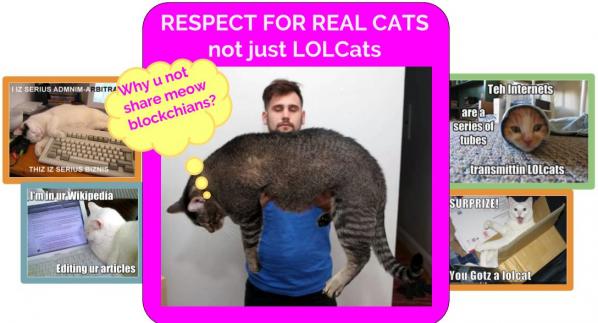
FREE Exhibition Tour and Artists Talk: Sat 18 June, 2-4pm
DOWNLOAD PRESS RELEASE (.pdf)
SEE IMAGES FROM ACCOMPANYING EVENTS
Featuring Gretta Louw, Lily Hibberd, Brook Andrew, Curtis Taylor, Jenny Fraser, Sharon Nampijinpa Anderson and the Warnayaka Art Centre.
Networking the Unseen is the first exhibition of its kind to focus on the intersection of indigenous cultures and zeitgeist digital practices in contemporary art.
While digital networks manifest physically as tonnes of cabling, and electrical or electronic devices, the social and cultural impacts of the networks remain somehow invisible, eroding clearly felt boundaries of geography, place, culture and language.
Together with artist and curator Gretta Louw, Furtherfield presents an exhibition and event series that brings together concepts and experiences of remoteness and marginalised cultures, with art-making in contemporary society.
Five culturally and geographically disparate Australian artists – Gretta Louw, Jenny Fraser, Lily Hibberd, Brook Andrew, and Curtis Taylor – and artists, including Neil Jupurrurla Cook, Isaiah Jungarrayi Lewis, and Sharon Nampijinpa Anderson from the Warnayaka Art Centre in Central Australia, present work situated at the intersection between avant garde digital, media, and installation art, the sociological study of digital and networked culture, and activism.
Networking the Unseen proposes a radical rethinking of widely accepted stereotypes concerning the impact of networks on contemporary global cultures, digital art, the avant garde, and indigenous art-making.
It tackles subjects ranging from digital colonialism and cultural marginalisation (or, conversely, diversity/empowerment) within an increasingly connected, online world to universal concerns around cultural change as a result of technological migration.
The exhibition extends our focus to the extremities of the global digital network. It subtly proposes ways to claim power back from centralising forces of control to use these tools for positive change; for intercultural exchange and empowerment for marginalised communities.
The Phone Booth Project, by Paris-based Australian artist Lily Hibberd and Martu indigenous filmmaker and artist Curtis Taylor, is a multimedia installation that demonstrates the intricate relationship between community and technology and how this is uniquely affected by local circumstance and environmental factors. Phone booths have all but died out in urban environments, and yet this beautiful and nuanced work, created in the Western Desert region of rural Australia with the indigenous Martu communities, highlights the vital role that they continue to play at the edges of the network – where cell phone reception is often non-existent, and landline phone connections in every house are an infrastructure expense that neither the locals nor the government is willing or able to carry.

Brook Andrew is an internationally recognised Australian artist whose practice in installation, print, neon, and performance often draws on his Wiradjuri indigenous heritage. In Costumes for the Cell (2012) Andrew’s instantly recognisable digitally-facilitated contemporary revision of a traditional Wiradjuri pattern – a powerful example of the blending of old and new culture; tradition and technology – becomes a moving installation as it is worn by performers at the opening.
Gretta Louw’s ongoing collaboration with artists from the Warnayaka Art Centre has produced the two video works Digital Desert and Is the Desert Still the Desert in a Digital World? in 2012, followed in 2014 by the YAMA project – an immersive, on-site multimedia installation built in the remote central Australian desert. The immersive installation at Furtherfield manifests the physical installation in wall paintings, screens, and light. It invites us to explore the nature of cultural change brought about by the arrival of advanced digital technologies.

Name That Beach, a video work by a fore-runner of the indigenous digital art movement Jenny Fraser, is programmed alongside works by emerging artist Curtis Taylor in a fascinating and inspiring insight into contemporary digital media art-making in Australia.

The works in the exhibition invites reflection by non-indigenous audiences on the techno-cultural change within their own society, and their individual relationship to internet technologies.
Exhibition Tour and Artists Talk
Saturday 18 June 2016 – 2-4pm – Furtherfield Gallery & Commons
Join Neil Jupurrurla Cook, artist and Director of the Warnayaka Art and Aboriginal Cultural Corporation, and Gretta Louw, artist and curator, for a curated tour of Networking the Unseen and then head down to Furtherfield Commons for a Show and Tell about their collaboration and work.
FREE – Limited places, booking essential (register)
Free family workshops at Furtherfield Commons
Every Saturday from 23 July to 27 August, 2-4pm
Fun, interactive workshops for local families aged 5 upwards.
Details to be confirmed – Register your interest here
Young digital artists residency at Furtherfield Commons
25 July – 5 August, Monday-Friday, 11am-4pm
Adventures in arts and technology for young people 13-18 living in or attending school in Islington.
Details to be confirmed – Register your interest here
Networking the Unseen – Selfies and Alterity
Thursday 4 August, 6-8pm – Furtherfield Gallery & Commons
6-6.45: Gretta Louw will give a tour of the exhibition Networking the Unseen at Furtherfield Gallery.
7-8 join us at Furtherfield Commons where she will present preliminary work on a Warlpiri (First Nations Australian) selfie and photo editing app, a collaboration with the Warnayaka Art Centre, and discuss the ways in which your emojis are not innocent, digital colonialism, and how selfies, social media, and alterity can be used for social good.
FREE – Limited places, booking essential (register)
Do It With Others – Art and Solidarity in the Age of Networks
Saturday 6 August, 12-5pm – Wysing Poly, Wysing Arts Centre, Bourn, Cambridgeshire.
With Ruth Catlow, Marc Garrett, Gretta Louw, Tim Waterman and They Are Here
This day long symposium explores art as a commons (defined as the cultural and natural resources accessible to all members of a society) in the age of networks and neoliberalism. How can the practices, circulation, appreciation and stewardship of arts be emancipated for all? Exploring tensions between digital inclusion and cultural diversity in the digital global hegemony.
FREE – Limited places, booking essential (register)
Brook Andrew is an internationally acclaimed Australian artist of indigenous (Wiradjuri) and Celtic descent. He has had significant exhibitions at world class institutions like the Museo Nacional Centro de Arte Reina Sofia and the Tate Britain, and been part of numerous international showcases, such as the Asia Pacific Triennial of Contemporary Art and the Asian Art Biennial. Andrew’s practice is intensely research-based, resulting in interdisciplinary works and immersive installations.
Jenny Fraser is a screen-based artist, curator, and educator. Her work utilises popular cultural references as a bridge to challenge viewers’ frames of reference. She redefines the art of curating as an act of sovereignty and emancipation, and founded the groundbreaking cyberTribe online gallery over a decade ago. A Murri of mixed ancestry, Fraser has received many accolades for her trailblazing work, most recently being awarded a prestigious Australia Council Fellowship in 2012 for her project Midden.
Lily Hibberd is an Australian artist and writer, working between Sydney and Paris. Her practice centres on marginalised people and histories and the restoration of memory through interdisciplinary collaborative social practice. Hibberd’s recent project include major exhibitions at the Musée des art et métiers (2015-16), Paris, and Spaced 2: Future Recall for Perth International Arts Festival (2015).
Gretta Louw is a multi-disciplinary artist and writer exploring the potential of art as a means of investigating cultural and psychological phenomena, particularly in relation to new technologies and the internet. Born in South Africa, she grew up in Western Australia and is currently based in Germany. Her work has been exhibited widely – in New York, Berlin, Jakarta, and Tel Aviv, amongst others – including in a number of public institutions such as the Kunstmuseum Solothurn, Stadtgalerie Mannheim, and Kunstverein Ludwigshafen.
Sharon Nampijinpa Anderson is an artist and educator and one of the directors of the Warnayaka Art and Cultural Aboriginal Corporation. Born near Mt Doreen in the Tanami Desert, Nampijinpa holds a degree from Bachelor College in Darwin, Australia has exhibited her art work widely, including at Galerie Yapa in Paris, Cooee Aboriginal Art Gallery in Sydney, and at the Darwin Aboriginal Art Fair. Nampijinpa is passionate about preservation of Warlpiri culture and has been involved in numerous projects to this end, such as the Arts Workers Extension Program in Australia and the production of the 2013 publication Warnayaka Art Centre: Life in the Digital Desert (Ed Gretta Louw).
Curtis Taylor is an emerging Martu Australian filmmaker and video artist. He has had screenings of his work at the National Gallery of Australia, the Fremantle Arts Centre, the Western Australian Museum of Art, and many more public institutions. Taylor is also currently involved in the VR film project, Collisions, which is debuting at the Sundance Film Festival.
Warnayaka Art Centre is a nationally renowned Australian indigenous (Warlpiri) art centre. The centre is home to a number of internationally successful Warlpiri painters including Lily Nungarrayi Hargraves and Molly and Rosie Napurrurla Tasman. Neil Jupurrurla Cook is the lead media and installation artist; he is the Director of the Warnayaka Art and Aboriginal Cultural Corporation and has shown his sculptural and media installations at the Darwin Art Museum.
Furtherfield was founded in 1997 by artists Marc Garrett and Ruth Catlow. Since then Furtherfield has created online and physical spaces and places for people to come together to address critical questions of art and technology on their own terms.
Furtherfield Gallery
McKenzie Pavilion
Finsbury Park, London, N4 2NQ
Visiting Information
Featured image: “Binoculars” at CHB in Berlin (2013)
Varvara Guljajeva & Mar Canet have been working together as an artist duo since 2009. They have exhibited their art pieces in a number of international shows and festivals. As an artist duo they locate thermselves in the fields of art and technology, and are interested in new forms of art and innovation, which includes the application of knitting digital fabrication. They use and challenge technology in order to explore novel concepts in art and design. Hence, research is an integral part of their creative practice. In addition to kinetic and interactive installations, the artists have also experience with working in public spaces and with urban media.
Varvara is originally from Estonia, and gained her bachelor degree in IT from Estonian IT College, and a masters degree in digital media from ISNM in Germany and currently is a PhD candidate at the Estonian Art Academy in the department of Art and Design. Mar (born in Barcelona) has two degrees: in art and design from ESDI in Barcelona and in computer game development from University Central Lancashire in UK. He is also a co-founder of Derivart and Lummo.
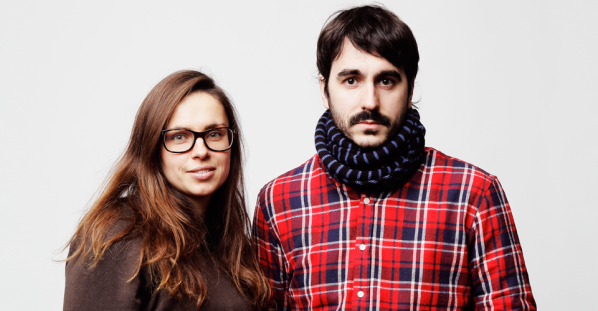
Filippo Lorenzin: Open culture is one of the main points of your research and activity. Could you describe how this influences your art practice?
Varvara & Mar: We are living in very exciting times. Open source has introduced democratization of production and creation. Now you can build your own 3D printer, laser cutter, knitting machine, make a light dimmer circuit or develop a body tracking system. Some years ago we couldn’t even imagine this and now we have access to this knowledge. People share their creations and these process, which is incredibly inspiring for us and many more people. Thus, knowledge is built on top of knowledge. We make use of open source marterial in our work and we try also to contribute back. This is the whole point of open source in our mind. And if one looks in the perspective of art to open source projects, then really many open source projects have artists on board, for example, OpenFrameworks, Processing, and more.
Open source also has an educational aspec. We do many workshops with people and teach what we know and how we work. We think open source culture is largely based on the spirit being open to sharing knowledge with many others.
FL: I’m really fascinated by your interest in textile fabrication. it reminds me the early industrial developments that were deeply connected to in the textiles industry. How and why would knitting be integrated these days as part of a makers’ culture?

V&M: The process of integration is well under way. There has been a good number of makerspaces who have dedicated areas for textile production, like WeMake in Milan and STPLN in Malmö. And believe it or not this simple thing helps to introduce gender balance in these kind of places. We’re not just talking about innovation, which can boost gender equality when you introduce knitting to hacking. We’re also talking about the democratisation of production, when thinking about clothing too. This area is quite vital and commonly understood. 3D printing toys is a cool activity for a weekend, but then it becomes boring. Knitting a sweater or a scarf has real value and the quality is always higher than a typical mass produced factory product.
For 3D printing we cannot say the same. Don’t get us wrong, we are not against the 3D printing. We love it and have six printers in our studio. Our point is that the areas of concern for digital fabrication are not complete, and the founders of FabLab have overlooked the whole area of textiles.
FL: You’ve run many workshops taking in account various topics such as 3D printing, solar energy and knitting, of course. How do these activities connect with your research?
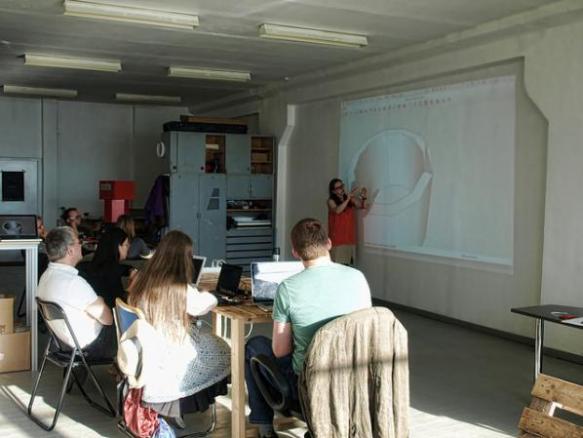
V&M: First of all, we like to teach and interact with our students. Second, preparing a workshop, allows us to research more about the field, and organise and share our accumulated knowledge and experience.
And finally, workshops are one part of our income. We don’t have any other jobs on the side, and exhibitions and commissions are not regular and do not always pay well, and yet the bills keep coming in. Hence, workshops help us to pay our bills.
FL: One of your works which most fascinate me is “Sonima” (2010). It’s a project that takes in account questions that have become quite recurrent in last months, mostly linked to Anthropocene discussions. The soft coexistence of technology and nature which is organic and artifical. Which is one of the main topics of your research: why are you so interested in this question? It looks like you’re trying to develop experiments for an utopistic future in which humans and nature live in symbiosis. Am I wrong?
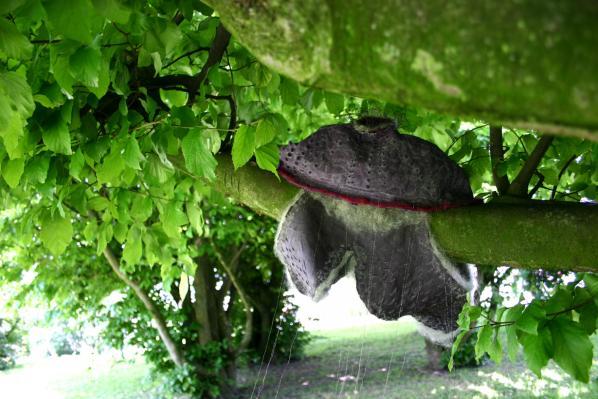
V&M: Yes, many of our works express our futuristic thoughts or imagination where the digital age will lead us and our planet to. It is nice that you have noticed this. I would say this kind of concept in 2010 was quite subconscious. I (Varvara) was very interested in organic form but with mutational origins but still adapted by nature.
More conscious approach towards anthropocene epoch can be seen and felt in “Tree of Hands” (2015), which is one of our recent works. However, it looks like we have touched quite a taboo topic. For instance, “Tree of Hands” was rejected by jury of PAD London fair because of its depressive concept.
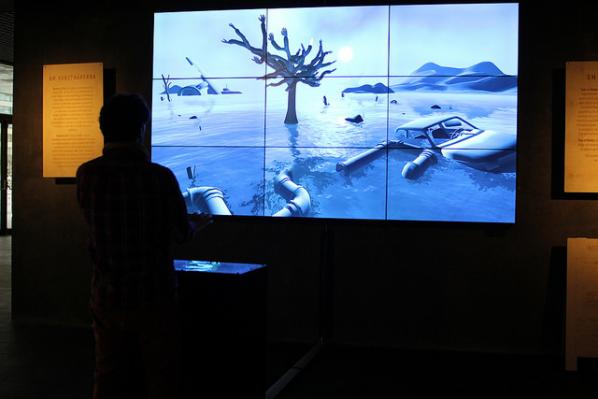
FL: “Shopping in 1 Minute” (2011) is another project I would like to ask you about. This work is about consumerism at its finest (or worst), turning one of the most typical capitalistic places (supermarkets) into ludic spaces. It’s a piece of social art that presents itself without informing the public what is right and what is wrong, but it rather suggests in a more subtle way the perversion at the base of that system. What do you think?
V&M: Yes. What we are doing is the absurd exaggeration of the same action (buying) to a maximum with one but: not buying and playing instead. There is a saying that shopping is 5 min happiness. The artwork tries to create a synthetic feeling of satisfaction of the ability to buy. The shopping centers are doing everything to stimulate our consumption needs, and our artwork manages to get inside their ecosystem and playfully releases that artificial desire to buy.
FL: With at least a couple of projects, you’ve also worked to the redefine hurban landscapes by looking at the invisble while at the same time taking on rather specific forces such as mass use of Wi-Fi networks becoming part of the everyday. I can’t help thinking that this is somehow related to privacy questions, probably because one of the most notorious scandals some years ago was Google’s secret recording of Wi-Fi networks with their Street View cars. Am I wrong?
V&M: Not really. But definitely Google has played a role in feeing our concerns about being watched, spied, hacked, scanned, etc. For example, the last scan for WiFi router names we did last summer in Tallinn some people were quite freaked out seeing a person on a bike with a camera on its head and tablet in front. I was even once asked if I worked for Google. 🙂 Anyways, the project was great fun for us, and we got to explore the city and discover the whole invisible communications networks and the self expressive layers of it all. After the Tallinn scan we even changed our minds about the 32-character local Twitter that the WiFi router SSID could be used for. The Tallinn experience showed us the new tendency: where people would use radio waves for semi-anonymous graffiti, communicating sometimes silly, protective, racist or political messages.
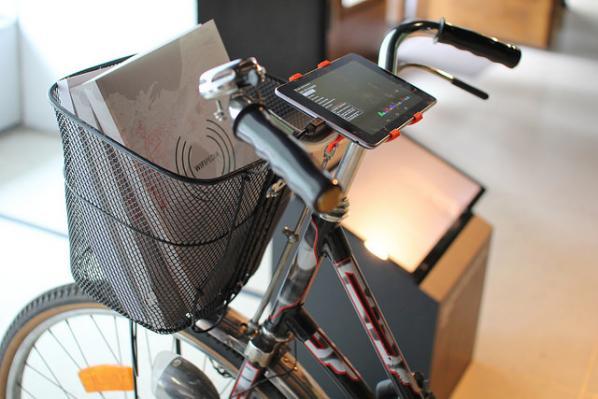
Talking about inspiration for this project, we got our interest for WiFi names from one article talking about the ability to track down pro- and contra-Obama communities by just looking at WiFi names in the neighborhood. This was before the US president election. Then we started to thinking of an art project on this topic.
FL: “The Rythm of City” (2011) is another project which is also ‘subtly’ related to control issues. The idea that someone can depict the state of a city by looking at data deducted from social media and web platforms. This type of thing is real now isn’t it – what do you think?

V&M: Definitely it is. However, the work’s main intention is not to talk about control issues rather about big data and its applications. Perhaps the main intention of this work is to offer to the viewer(s) a birds eye view on different cities in real time. In other words, The Rhythm of City allows you to zoom out and witness the larger picture on the current situation. And this larger picture is formed by everybody’s activity on social media, which is tracked down every minute. We call this action ‘unaware participation’ by digital inhabitants. The urban studies of Bornstein & Bornstein from early 1970s served as an inspiration for this artwork. They had discovered a positive correlation between the walking speed of pedestrians and the size of a city. Simply put: the bigger a city, the faster people move. The artwork demonstrates our interpretation of a city’s tempo through in its digital form or life. Hence, The artwork talks about pace of life in different cities at the same moment when the piece is viewed.
FL: What have you been working on these last few months and what plans do you have for 2016?
V&M: We are working on a series of new works talking about money. When we have completed “Wishing Wall” in London in 2014, since then we have noticed that the majority of people, especially a younger audience, wish for money. This really caught our attention. The ongoing hard economical situation in Europe pushes forward the need for money and also introduces a growing gap between the economical classes. So we’re investigating people’s desire for money and its connection with happiness. Making use of interactive technology we are aiming to approach playfully and magically the desire for becoming rich. At the same time, we cannot let go of knitting. At present, we are working on an open source flat knitting machine, which will be able to knit patterns also. Besides the new productions, we are showing our existing works in various exhibitions. For the confirmed ones, “The Rhythm of City” will be part of “REAL-TIME” a group show curated by Pau Waelder in Santa Monica museum in Barcelona from the 28th January. In February “Digital Revolution” (the touring exhibition by Barbican), which “Wishing Wall” is part of, moves from Onassis Cultural Center in Athens to Zorlu Center in Istanbul. And hopefully we get couple of other shows and new productions that are in the air at the moment and still to be confirmed soon.
On 29 March it’s going to be Arduino Day 2014!
Furtherfield and Codasign will be hosting a day full of free activities at Furtherfield Commons in Finsbury Park. We would like to invite anyone interested in physical computing – people from all ages and all levels of expertise – to come and spend the day with us.
The day will consist of a series of FREE Arduino taster workshops for absolute beginners in the morning and a showcase of interesting interactive Arduino projects by artists, techies and enthusiasts in the afternoon. To participate in the workshops or to show your work, please see details below.
WORKSHOPS
10:00 – 11:00 Intro workshop for children (9-12 years old)
11:30 – 12:30 Intro workshop for young people (13-18 years old)
13:00 – 14:00 Intro workshop for adults
14.30 – 17:00 SHOWCASE
The workshops with give you a taster of how to work with Arduino, teaching you how to write your very first ‘sketch’ as well as how to build circuits on breadboards. We will work with components such as LEDs, potentiometers, Piezos and more! For the kids workshop we’ll combine Arduino with Scratch to show children how these two platforms can communicate with each other. For the workshops for young people and adults we will purely be using the Arduino environment, but will also be demonstrating how you can use it on your Raspberry Pi! All workshops are FREE. For more details about the workshops and how to sign up, please visit the Codasign webpage.
If you have an Arduino project you would like to show and discuss, we would like to invite you to participate in our Arduino Showcase. This is an opportunity to share your work and hear about what others are doing, to meet people, to be inspired, and, mainly, to have a good time. If this sounds like something you would like to do, please fill in this form. We aim for this to be a friendly and informal event, where visitors can wander around, get ideas, ask questions and play with the projects being showcased. We will provide power, Internet, and a table, and of course, there will be drinks.
If you have any questions or would like to discuss any details with us, please get in touch with Olga, olga@furtherfield.org.
Furtherfield Commons
Finsbury Park
Near Finsbury Gate On Seven Sisters Road
E: info@furtherfield.org
Furtherfield Gallery is supported by Haringey Council and Arts Council England.
Italian artist duo Art is Open Source (AOS) will be working as Artists in Residence at Furtherfield Gallery and lab space in February 2011. During the four week residency Salvatore and Oriana will work on the development of their latest project REFF: the invasion of ordinary reality to reinvent a new one using a fake institution, a book, an urban performance and an augmented reality drug.
The residency will result in a final exhibition, REFF – REMIX THE WORLD! REINVENT REALITY!, showcasing a live, glitch performance, an urban intervention and a virtual entity by artists featured in the new REFF book: Garrett Lynch (Ir), Rebar Group (US) and xname (It) alongside a real-time interactive map that describes the life of REFF all over the world: 60 authors, artists, designers, architects, hackers, journalists, activists; dozens of actions; a live and real-time stream of information collectively produced by a worldwide community of re-inventors.
In the three weeks prior to the exhibition opening AOS will run workshops with students to use the augmented reality application. The students’ interventions will form part of the urban performances which will populate the gallery during the 4 week exhibition.
”The use of communication technologies and invasive practices for the reinvention of reality is crucial for student movements in this difficult moment. We would like to get the students involved in the REFF experiments by providing them with access to those technologies that can work as effective forms of critical and alternative communication. Students in UK and in Italy will have access to all the cross-medial CMS used to build the REFF book which will
enable them to create their own QRCodes and Fiducial markers that they can then stick around the city to disseminate information integrated within their communication across the web and the city.” – Art is Open Source
More information about the exhibition and workshops
For more about Art is Open Source and Fake Press:
www.romaeuropa.org
www.fakepress.it
www.artisopensource.net
Events related to this residency:
REFF – REMIX THE WORLD! REINVENT REALITY! at Furtherfield Gallery, 25 February – 26 March 2011.
REFF – REMIX THE WORLD! REINVENT REALITY! Opening Event at Furtherfield Gallery, 25 February 2011, 6:30-9pm
Workshops to create and film a drama promoting an enthusiasm for maths at Mayfield Primary School.
Participants: 28 children aged 8-9 years old from Mayfield Primary School
Artist: Michael Szpakowski (video artist, composer and facilitator)
In a series of workshops to promote an enthusiasm for maths within the school, a class of children aged 8-9 years old created and filmed a drama in 9 parts in which they cracked a series of knotty maths problems that they encountered during a school day. Pupils puzzle and ponder over how many minutes they have before they have to leave for school, how to organise rows and columns for school assembly, how it feels to crack a hard Maths problem. These short films, where we see the pupils trying to work out maths problems together, continue to serve as playful teaching tools within the school.
Partners:Creative Partnerships, Mayfield Primary School.
Inclusive workshops with young people within VisitorsStudio (Furtherfield.org’s artware for live collaborative audiovisual remix)
“It’s really a good experience. It’s nice to try to communicate with people in a different way. It’s nice to know that people on the other side of the world are, like, normal people… I have been to America but it’s not quite the same. You don’t get to know them; you see them briefly in shops and stuff. We actually got to know them on a personal level which is nice and interact with them. I look forward to doing it again; I really look forward to doing the live mixing at Watershed.” – Young participant from The Basement, Bristol
Participants: 15 young people from Tottenham; young people from Wood Green Playstation; 25 young people in The Basement, Bristol and The Point, in the Bronx, New York
Artists: Ruth Catlow and Melissa Bliss
Between 2005 and ’07 we ran a series of projects with young people within VisitorsStudio (Furtherfield.org’s artware for live collaborative audiovisual remix). These workshops were developed with Graziano Milano.
CoMix Workshops for 15 young people from Tottenham were lead by artists Graziano Milano and Michael Szpakowski in February 2007. Participants created image and audio files inspired by their locality and then performed their mixes to a live audience of approximately 200 friends, family and community and an online audience of 20 people to celebrate the official opening of the Bruce Grove Media Centre for Young People.
Lead Artists: Graziano Milano and Michael Szpakowski
Partners: Haringey Youth Services, Bruce Grove Media Centre for Young People
As part of our Game/Play exhibition we ran summer workshops at HTTP Gallery in July 2006, in which young people from Wood Green Playstation connected online and mixed their audiovisual files with young people from Q-Arts in Derby. Their performances were watched by audiences at Q-Arts.
Lead Artists: Ruth Catlow and Melissa Bliss
Partners: Q-Arts (now Quad), Haringey Youth Services, Wood Green Playstation
Furthernoise.org (our sister organisation) facilitated a series of collaborative workshops, within VisitorsStudio, between 25 young people in The Basement, Bristol and The Point, in the Bronx, New York. Participants gave a performance of their work at The Watershed in Bristol in March 2006.
Partners: The Basement, Bristol and The Point, NY.
Related links: VisitorsStudio